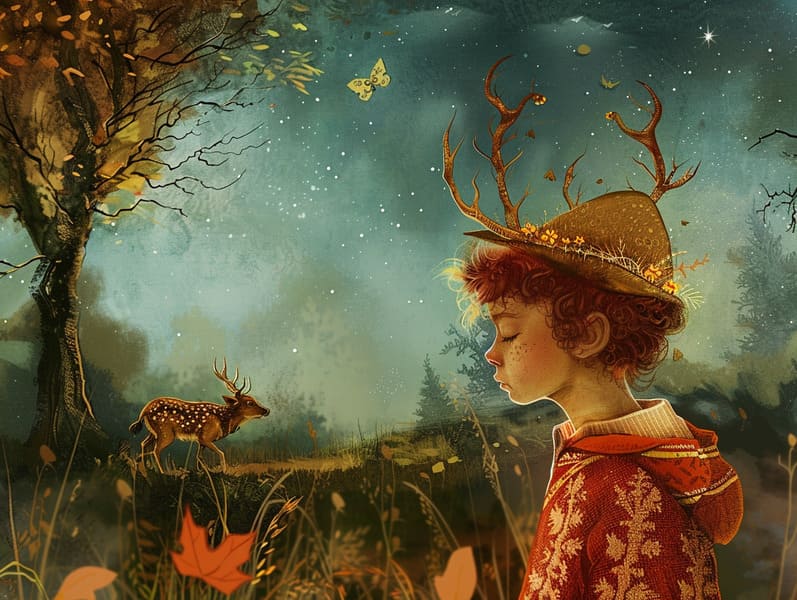A Brief History of Old Fairy Tales and Its Unchanging Delight.
A Brief History of Old Fairy Tales and Its Unchanging Delight.
Blog Article

Historical fairy tales have timeless appeal. These tales have been whispered from one generation to the next far before they were ever documented. They emerged from a variety of backgrounds, including Indigenous traditions. They were initially passed along among mature audiences, often carrying themes and messages pertaining to the societal norms and beliefs of the time.
The Brothers Grimm, the two Grimm brothers, were among the first to assemble many of these beloved fairy tales. Their compilation, "Grimm's Fables," included stories like "The Little Glass Slipper," "The Bread Crumb Trail," and "The True Story of Snow White," which have since become essentials in the world of beloved fairy tales. Similarly, Hans Christian Andersen's delightful narratives, such as "The Mermaid's Tale," and "The Duckling's Story," have touched hearts worldwide, ensuring their place in the pantheon of beloved fairy tales.
Despite their age, traditional fairy tales remain as significant as ever, especially as kids' bedtime tales. These delightful tales are now available in various formats, including beautifully illustrated books, magical animations, and internet fairy tales.
Their ongoing significance can be traced to several delightful features:
Key Lessons: Old fairy tales often convey important moral lessons. Fairy tales like "The Shepherd Boy and the Wolf" teach the merit of truth, while "The Race of the Tortoise and the Hare" highlight the merits of steadfastness and modesty. These narratives offer little ones clear distinctions between truth and falsehood, building their moral compass in a subtle yet meaningful way.
Compassion and Knowledge: Traditional fairy tales frequently present beings facing struggles and tests, inciting children to understand with their struggles and celebrate their triumphs. For instance, "Beauty and Her Beast" illustrates the virtue of valuing inner qualities to acknowledge the inner self of a soul, developing perception and appreciation.
Cultural Insights: Many old fairy tales are rich in the cultural contexts from which they developed. Learning from these fairy tales can provide fascinating glimpses into different ways of life, building a sense of global appreciation and perception.
Inventiveness and Fantasy: The fantastical elements in classic fairy tales—mythical entities—foster children’s imaginative ideas. These stories bring readers to enchanted realms, fostering creative dreams and a sense of amazement that lasts a lifetime.
Traditional fairy tales are not only mesmerizing but also instructive. They provide mesmerizing tools in developing various cognitive and emotional skills in young readers. When traditional fairy tales are spoken, they nurture linguistic abilities by teaching new phrases and sophisticated sentence structures. This practice also boosts auditory perception and attentiveness, as the young focus on every detail, eager to see what happens next.
Furthermore, debating the themes and characters of traditional fairy tales can improve cognitive skills and logical thinking. Little ones learn to detect patterns, anticipate outcomes, and make sense of cause and effect. These explorations also aid little ones express their thoughts and feelings, adding to their emotional intelligence.
In today’s technological age, the availability of digital storybooks has made these narratives more within reach than ever. Internet resources and programs present broad selections of famous fairy tales that can be browsed or played anytime, anywhere. Fairy tales narrated are particularly prevalent, sharing an interactive method for the young to experience these entrancing tales. Narrated books and read-to-me stories take characters and settings to life, often complemented by mesmerizing music and tunes that enhance the story adventure.
The enduring charm of classic fairy tales lies in their ability to alter to modern days while continuing with their underlying messages. Contemporary takes of these fairy tales often highlight more diverse protagonists and modern settings, making them relevant to today’s audience. However, the fundamental themes of heroism, benevolence, and lawfulness remain unchanged, continuing to impact young readers of all ages.
Ancient fairy tales also offer a sense of contentment and knowability. They bequeath a methodical narrative with a definite beginning, middle, and end, often ending with the culmination of conflicts and the triumph of goodness over badness. This constancy can be get more info comforting for young readers, allowing a sense of solidity in an ever-changing world.
Timeless fairy tales continue to enchant and instruct new generations, maintaining their spell and applicability in modern society. As children's bedtime stories, they extend a perfect blend of fascination and comprehension, advancing moral values, empathy, and creativity. The presence of internet fairy tales and the popularity of fairy tales read aloud ratify that these ancient narratives remain acquirable to new generations.
By upholding and distributing these tales, we continue to value the rich tapestry of legends and cultural heritage. Whether you are delving into a artistically illustrated book, enjoying a online collection, or listening to an voice book, the allure of classic fairy tales is always within reach. These tales reveal of the endless strength of stories and its ability to tie us across eras and regions.
No matter if you are experiencing a beautifully illustrated book, accessing a web collection, or listening through an read-aloud story, the splendor of timeless fairy tales is always within reach.
These fairy tales emphasize of the eternal essence of fairy tales and its ability to unite us across generations and cultures, forming a connection that charms and informs alike.